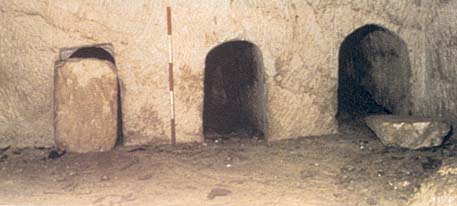Image Details

Courtesy Gideon Avni
R.I.P. Cut into the walls of cave tombs, deep niches known as loculi were widely used for burials in the Second Temple period. Typically 6 feet deep, and 1.5 to 2 feet wide and high, loculi (in Hebrew, kokhim) also served as repositories for ossuaries, small stone boxes into which the deceased’s bones were placed after the corpse decomposed (about one year after burial).
Both the arcosolium and loculi shown here were discovered in the Akeldama graveyard, just south of the City of David, where Jerusalem’s elite built lavish family tombs, some of them with entrances facing north across the Hinnom Valley.
